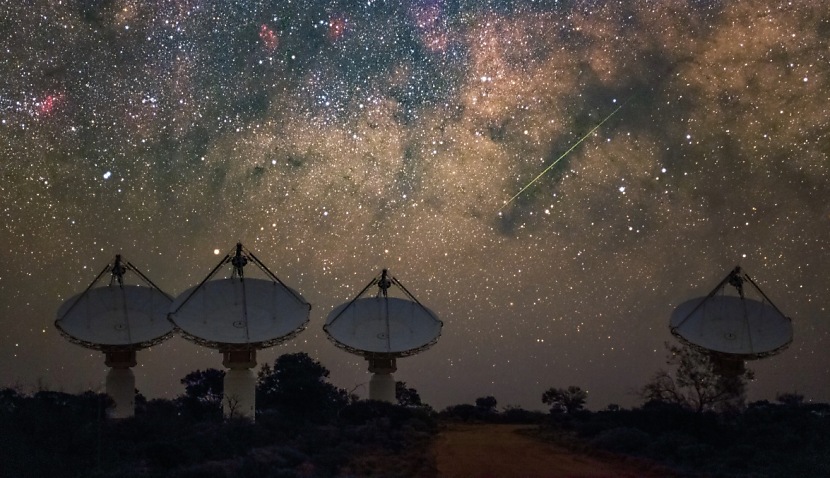
The national science agency compared its new CRACO method to sifting through sand on a beach and said the instrument was made up of a cluster of computers connected to the Australian SKA Pathfinder (ASKAP) radio telescope in Western Australia.
Fast radio bursts are intense bursts of radio emission that can last just milliseconds and were only first detected in 2007. The exact processes that cause them have long been shrouded in mystery.
Researchers using CRACO at Curtin have discovered 20 bursts alongside two sporadically emitting neutron stars. The results were published in the Publications of the Astronomical Society of Australia.
Dr Andy Wang, from the International Centre for Radio Astronomy Research, who led the research group, said the team had found more astronomical objects than expected.
“We were focused on finding fast radio bursts, a mysterious phenomenon that has opened up a new field of research in astronomy,” he said.
“CRACO is enabling us to find these bursts better than ever before. We have been searching for bursts 100 times per second and in the future, we expect this will increase to 1,000 times per second.
“Once at full capacity, CRACO will be a game changer for international astronomy.”
CSIRO astronomer and engineer Dr Keith Bannister, who, along with his team, developed the instrument, said the scale of observation enabled by the new technology is enormous.
“CRACO taps into ASKAP’s ‘live’ view of the sky in search of fast radio bursts,” he said.
“To do this, it scans through huge volumes of data – processing 100 billion pixels per second – to detect and identify the location of bursts.
“That’s the equivalent of sifting through a whole beach of sand to look for a single five-cent coin every minute.”
CSIRO said CRACO had been engineered to sift through the trillions of pixels received by the telescope to find anomalies, alerting researchers the moment it spots something out of the ordinary.
Dr Wang added that his team had increasingly expanded CRACO’s research targets to find more exotic sources.
“We’re also detecting long-period transients, which remain mysterious objects within our galaxy. Both fast radio bursts and these transients were first discovered in Australia, so it is great that we’re continuing the path of discovery with this impressive technology.”
The ASKAP telescope opened in Western Australia in 2012 and is intended to provide a “big picture” view of the universe.
It means that instead of studying a few objects in detail, it can catalogue millions of new galaxies and other astronomical sources.
ASKAP has 36 dish antennas that work together as one telescope and each antenna stands three storeys tall.
CRACO will soon be made available to astronomers all over the world as part of CSIRO’s Australia Telescope National Facility, a suite of national research infrastructure which includes Murriyang, CSIRO’s Parkes radio telescope.

Adam Thorn
Adam is a journalist who has worked for more than 40 prestigious media brands in the UK and Australia. Since 2005, his varied career has included stints as a reporter, copy editor, feature writer and editor for publications as diverse as Fleet Street newspaper The Sunday Times, fashion bible Jones, media and marketing website Mumbrella as well as lifestyle magazines such as GQ, Woman’s Weekly, Men’s Health and Loaded. He joined Momentum Media in early 2020 and currently writes for Australian Aviation and World of Aviation.
Receive the latest developments and updates on Australia’s space industry direct to your inbox. Subscribe today to Space Connect here.









